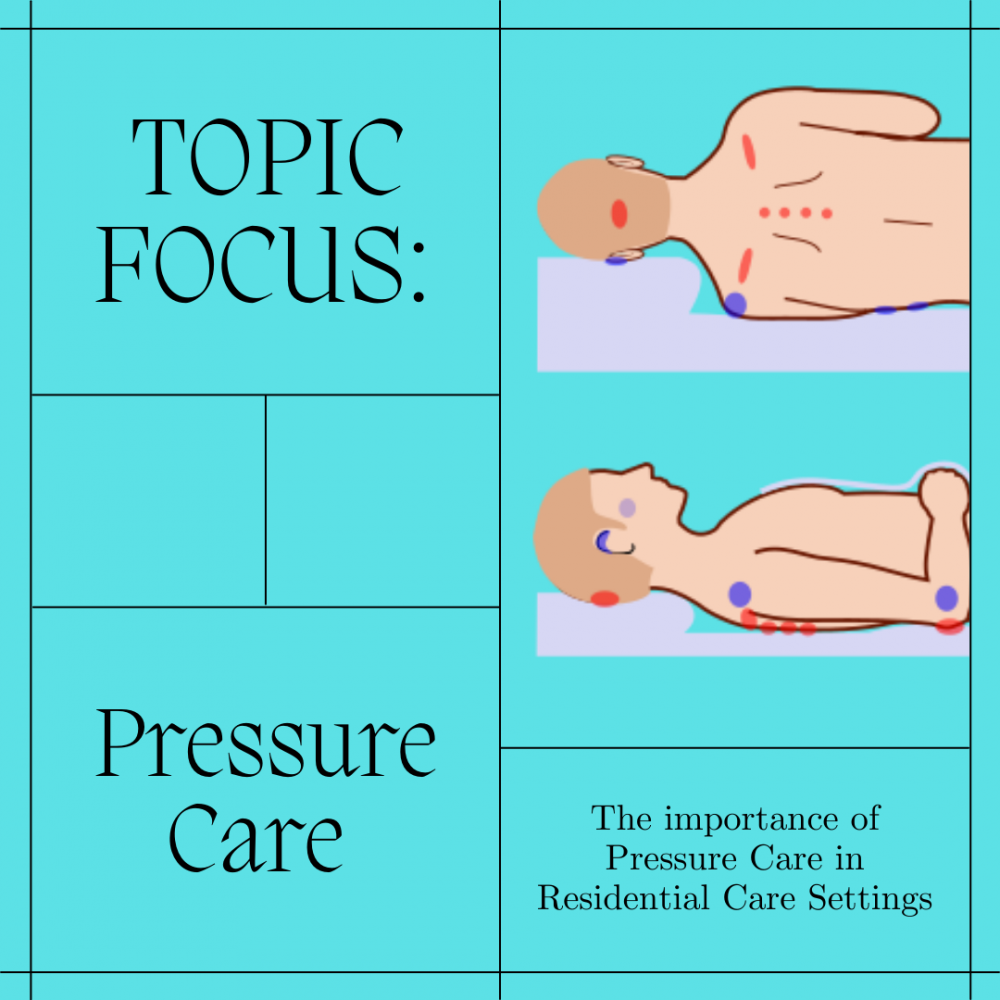TOPIC FOCUS: The importance of pressure care within residential care facilities
16/09/2022

As part of our commitment to transparency and personal development of our staff, we will be creating monthly articles on subjects relating to the Topic Focus subject for that month.
*Please bear in mind that pressure care includes imagery of ulcers and flesh wounds which may upset some people*

We are beginning with our September 2022 article focusing on the importance of pressure-care within residential care facilities.
This is incredibly important within care homes as pressure ulcers can increase risks of life-threatening complications, such as high blood pressure and gangrene.
NICE (National Institute for Health & Care Excellence) have said that pressure-care is a key indicator in the quality of care being provided within a service.
We’ve put together a quick-fire guide for anyone who would like additional information, with some FAQS!
 Who is the most at-risk of getting pressure ulcers?
Who is the most at-risk of getting pressure ulcers?
People living within care homes are at increased risk of pressure ulcers, especially in cases where residents have limited mobility.
This is due to the risk of developing pressure ulcers and sores increasing in cases where people are in still positions, and are unable to move themselves and change position.
If a resident has previously had a pressure ulcer in the past, this can mean they are at an increased risk of developing one again and may need to be closely monitored to ensure the problem does not persist from a previous incident.
People with damaged or thin skin may be at increased risk of developing pressure ulcers due to their existing conditions, as well as people with significant cognitive impairments as they may struggle to effectively communicate their discomfort.
What exactly is a pressure ulcer and how do they occur?
Pressure ulcers are a skin condition which occurs when the blood flow to a certain area of the body is reduced, due to the skin and tissue underneath being damaged by pressure on the area. This tends to be more common in individuals who spend long periods of time in a bed or chair.
This is why we must consult our risks assessments and ensure they are updated with any changes to ensure the highest quality care for our residents, and intervention from relevant outside agencies as appropriate to provide the best care.
It is also of paramount importance that any details relating to a residents pressure care procedure is updated within their care plan. This is also the easiest way to effectively limit the risks of residents developing pressure ulcers, whilst also taking into account any actions which can be taken to reduce the risk of pressure sores.
How do you spot a pressure ulcer?
There are four main stages of pressure related injury:
Grade 1 (Superficial) – Referring to a reddening area of intact skin which shows discoloration in a darker colour to the surrounding area of flesh, which has the potential to turn a blue or purple hue. This may also be accompanied by an itching sensation of the skin, and the area may be harder in comparison to the surrounding skin.
Grade 2 (Superficial) – Referring to an area of skin which has become thinner than the surrounding area, often displaying as a blister-like abrasion on the skin’s surface, and does not feature any surrounding bruising of the area.
Grade 3 (Deep) – This refers to full thickness skin loss, with an open wound displaying flesh which can, in some cases, be subcutaneous. These ulcers can be quite varied in size and appearance with some ulcers being contained mainly under the skins surface, with the potential for the wound to burrow under the skin.
Grade 4 (Deep) – This is the most serious grade of pressure ulcers, with sores getting to this stage potentially showing wounds down to the bone. The depth of these ulcers varies depending on the location of the wound, and can effect the muscles, fascia, tendons and joints in the affected area.
We feel sharing this information is incredibly important to ensure the continued health and wellbeing of our amazing residents within our care – with it being the responsibility of everyone providing care to ensure all aspects of our residents health and wellbeing are being listened too and considered in every decision within the home.
If you do see signs of a developing pressure sore within any of our services, please ensure you follow our policies and procedures and document any changes as necessary.
This will include recording any areas of redness on the residents skin, and ensuring a body map is completed. These details will be shared with your care team as a whole to ensure the best quality of care possible is achieved.








